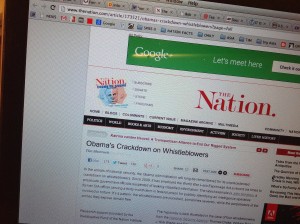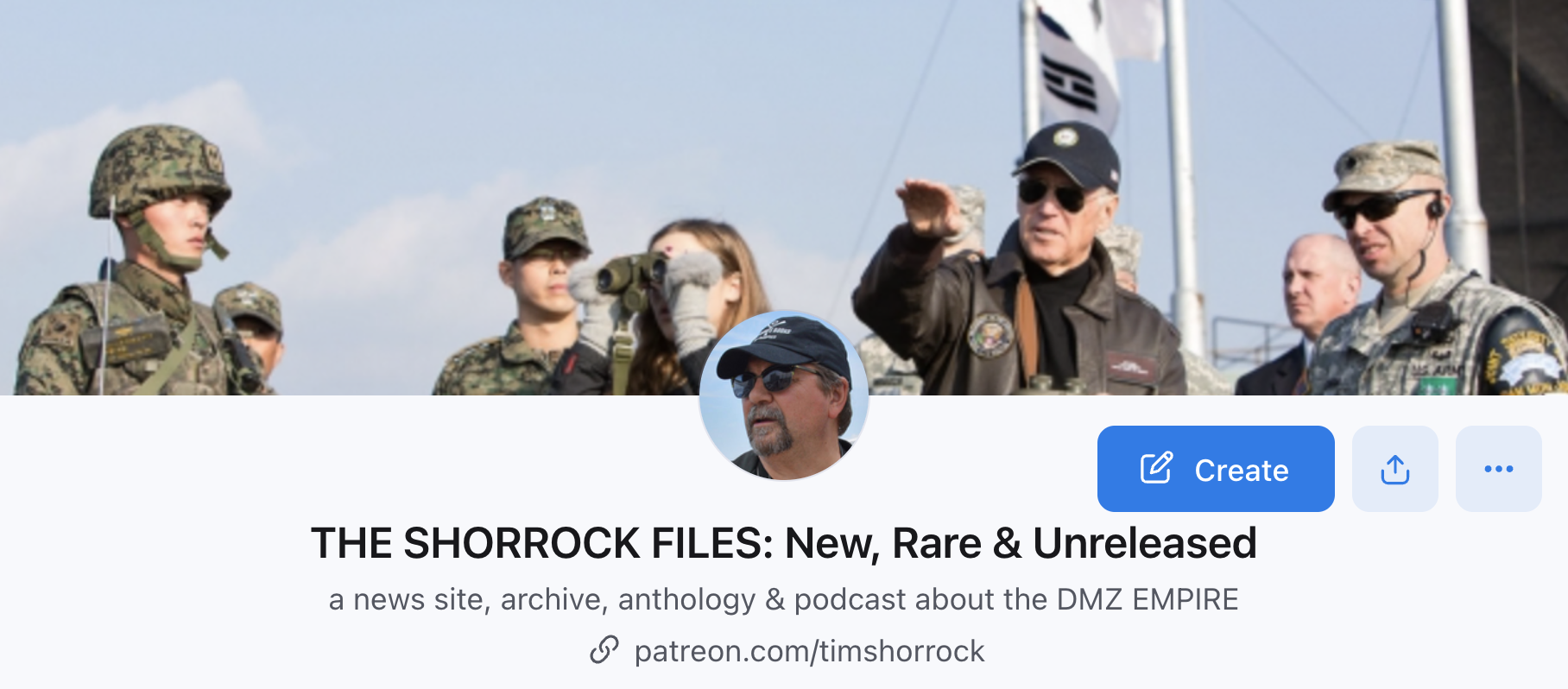My latest, published today in The Nation: 
In the annals of national security, the Obama administration will long be remembered for its unprecedented crackdown on whistleblowers. Since 2009, it has employed the World War I–era Espionage Act a record six times to prosecute government officials suspected of leaking classified information. The latest example is John Kiriakou, a former CIA officer serving a thirty-month term in federal prison for publicly identifying an intelligence operative involved in torture. It’s a pattern: the whistleblowers are punished, sometimes severely, while the perpetrators of the crimes they expose remain free.
The hypocrisy is best illustrated in the case of four whistleblowers from the National Security Agency: Thomas Drake, William Binney, J. Kirk Wiebe and Edward Loomis. Falsely accused of leaking in 2007, they have endured years of legal harassment for exposing the waste and fraud behind a multibillion-dollar contract for a system called Trailblazer, which was supposed to “revolutionize” the way the NSA produced signals intelligence (SIGINT) in the digital age. Instead, it was canceled in 2006 and remains one of the worst failures in US intelligence history. But the money spent on this privatization scheme, like so much at the NSA, remains a state secret.
The story goes back to 2002, when three of the whistleblowers—Loomis, Wiebe and Binney—asked the Pentagon to investigate the NSA for wasting “millions and millions of dollars” on Trailblazer, which had been chosen as the agency’s flagship system for analyzing intercepted communications over a smaller and cheaper in-house program known as ThinThread. That program was invented by Loomis, one of the NSA’s top software engineers, and Binney, a legendary crypto-scientist, both of whom began working for the NSA during the Vietnam War. But despite ThinThread’s proven capacity to collect actionable intelligence, agency director Gen. Michael Hayden vetoed the idea of deploying the system in August 2001, just three weeks before 9/11.
Hayden’s decisions, the whistleblowers told The Nation, left the NSA without a system to analyze the trillions of bits of foreign SIGINT flowing over the Internet at warp speed, as ThinThread could do. During the summer of 2001, when “the system was blinking red” with dangerous terrorist chatter (in former CIA Director George Tenet’s famous words), they say the agency failed to detect critical phone and e-mail communications that could have tipped US intelligence to Al Qaeda’s plans to attack.
“NSA intelligence basically stopped in its tracks when they canceled ThinThread,” says Wiebe, sitting next to Binney at an Olive Garden restaurant just a stone’s throw from NSA headquarters in Columbia, Maryland. “And the people who paid for it were those who died on 9/11.”
The NSA Four are now speaking out for the first time about the corporate corruption that led to this debacle and sparked their decision to blow the whistle. In exclusive interviews with The Nation, they have described a toxic mix of bid-rigging, cronyism and fraud involving senior NSA officials and several of the nation’s largest intelligence contractors. They have also provided an inside look at how Science Applications International Corporation (SAIC), the government’s fourth-largest contractor, squandered billions of dollars on a vast data-mining scheme that never produced an iota of intelligence.
“That corruption was the heart of our complaint—the untold treasure spent on a program that never delivered,” Drake explained to me one morning in Bethesda, Maryland, across the street from the local Apple Store where he now works. He wants it understood that the NSA Four’s case was not primarily about President Bush’s warrantless domestic surveillance program, as outrageous as that was. “Some in the press think we blew the whistle on Trailblazer because, oh, it violated people’s rights,” he said. “Well, it didn’t violate anybody’s rights, or create any intelligence, because it never delivered anything.”
To read on, click here.
